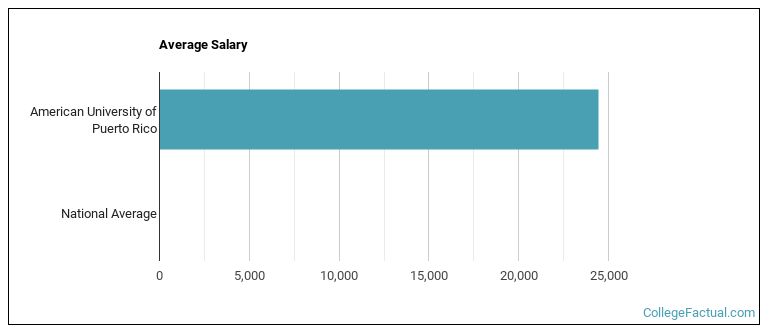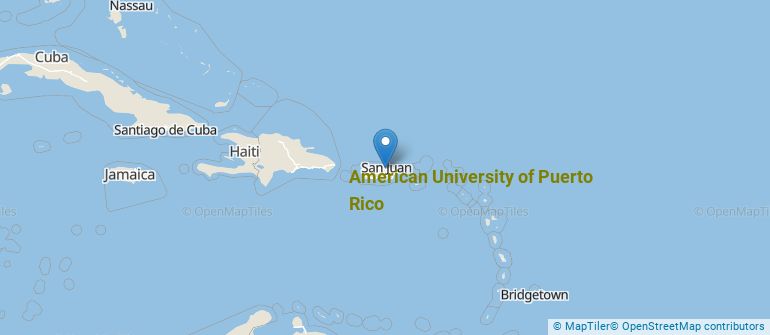 by our College Data Analytics Team
by our College Data Analytics TeamExplore the best ranked schools for the programs you are most interested in.
Out of the 29 colleges in Puerto Rico, AUPR Bayamon is ranked at #29.
AUPR Bayamon was not ranked in College Factual's 2025 Best Overall Colleges report. This could be for a number of reasons, including lack of data.
See all of the rankings for American University of Puerto Rico.
If you are worried about getting into American University of Puerto Rico, don't be. The school has a liberal open admissions policy, which means you only need to meet basic requirements in order to be admitted. Still, be sure to submit a complete application and provide any other requested materials.
The student to faculty ratio is often used to measure the number of teaching resources that a college or university offers its students. The national average for this metric is 15 to 1, but at AUPR Bayamon it is much better at 11 to 1. That's good news for students who want to interact more on a personal level with their teachers.
Another measure that is often used to estimate how much access students will have to their professors is how many faculty members are full-time. The idea here is that part-time faculty tend to spend less time on campus, so they may not be as available to students as full-timers.
The full-time faculty percentage at American University of Puerto Rico is 17%. This is lower than the national average of 47%.
The freshmen retention rate of 79% tells us that most first-year, full-time students like American University of Puerto Rico enough to come back for another year. This is a fair bit higher than the national average of 68%. That's certainly something to check off in the good column about the school.
During the 2017-2018 academic year, there were 281 undergraduates at AUPR Bayamon with 244 being full-time and 37 being part-time.
The net price is calculated by adding tuition, room, board and other costs and subtracting financial aid.Note that the net price is typically less than the published for a school. For more information on the sticker price of AUPR Bayamon, see our tuition and fees and room and board pages.
It's not uncommon for college students to take out loans to pay for school. In fact, almost 66% of students nationwide depend at least partially on loans. At AUPR Bayamon, approximately 3% of students took out student loans averaging $7,028 a year. That adds up to $28,112 over four years for those students.
Get more details about paying for American University of Puerto Rico.

See which majors at American University of Puerto Rico make the most money.
Get more details about the location of American University of Puerto Rico.

Contact details for AUPR Bayamon are given below.
| Contact Details | |
|---|---|
| Address: | Carr. #2, Km.14.4, Bo. Hato Tejas, Bayamon, PR 00960-2037 |
| Phone: | 787-620-2040 |
| Website: | aupr.edu/ |
| Facebook: | https://www.facebook.com/AUPR.edu |
| Twitter: | https://twitter.com/AmericanUPR |
| Most Popular Majors | Bachelor’s Degrees | Average Salary of Graduates |
|---|---|---|
| Criminal Justice & Corrections | 12 | $14,574 |
| Business Administration & Management | 9 | NA |
| Computer Information Systems | 9 | NA |
| Human Resource Management | 8 | NA |
| Curriculum & Instruction | 5 | NA |
| Teacher Education Grade Specific | 5 | NA |
| Accounting | 3 | NA |
| Special Education | 2 | NA |
| Communication & Media Studies | 1 | NA |
| Teaching English or French | 1 | NA |
This is a decrease from the 261 students who took online classes the previous year.
Learn more about online learning at American University of Puerto Rico.
If you’re considering American University of Puerto Rico, here are some more schools you may be interested in knowing more about.
Curious on how these schools stack up against AUPR Bayamon? Pit them head to head with College Combat, our free interactive tool that lets you compare college on the features that matter most to you!
Footnotes
*The racial-ethnic minorities count is calculated by taking the total number of students and subtracting white students, international students, and students whose race/ethnicity was unknown. This number is then divided by the total number of students at the school to obtain the racial-ethnic minorities percentage.
References
More about our data sources and methodologies.